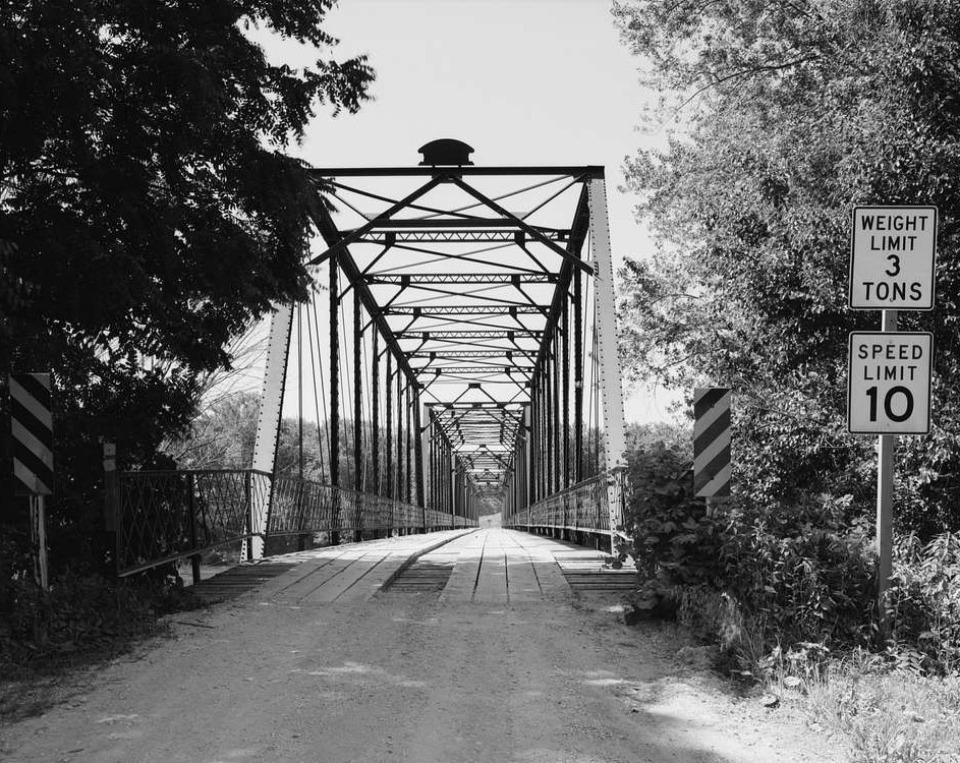Kilbourne Bridge
The Kilbourne Bridge is significant as the first large-scale engineering project undertaken by the Iowa State Highway Commission and one of the only pin-connected truss designs used by the ISHC prior to adopting its standard, rigid-connected truss plans in 1913.
It is a well-preserved example of wagon truss construction and one of the last of the multiple-span six-pin-connected Pratt through trusses remaining in Iowa.
A village site in the southeast part of section 2 of Lick Creek Township, in the vicinity (west) of the mouth of Lick Creek, by the Des Moines River and on the old Keokuk and Des Moines (later the Chicago, Rock Island, and Pacific) Railway. It was laid out in July 1839, by John Patchett, and named Philadelphia, obviously after the city in Pennsylvania.
Later the name was changed to Kilbourne. The U. S. soil map, 1917, gives the name as Kilbourn. The name Kilbourne is doubtless for David W. Kilbourne of Keokuk, Iowa.
He was born April 13, 1803, in Marlborough, Connecticut. He emigrated to Iowa in 1836. He platted Montrose about 1837, established a store and became postmaster in 1839, moved to Fort Madison late in 1843, and removed to Keokuk in 1852. In 1854 he helped organize the Keokuk, Fort Des Moines, and Minnesota Railroad Company, the name of which in 1864 was changed to the Des Moines Valley Railroad Company, becoming its financial agent in 1857 and president in 1868; resigned in 1873; died April 24, 1876.
The railroad was later known as the Keokuk and Des Moines Railroad and is now a part of the Chicago, Rock Island, and Pacific system. His son George Erskine Kilbourne was a director and for some time purchasing agent for the railroad company; born May 26, 1832, died February 26, 1889.
Listed on the National Register of Historic Places in 1998. The bridge is now closed to vehicular and pedestrian traffic.



